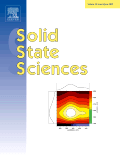
SOLID STATE SCIENCES
Scope & Guideline
Advancing the Frontiers of Materials Research
Introduction
Aims and Scopes
- Material Synthesis and Characterization:
The journal emphasizes innovative methods for synthesizing solid-state materials, including nanostructures, composites, and heterojunctions, followed by comprehensive characterization techniques such as X-ray diffraction, spectroscopy, and electron microscopy. - Electrochemical and Photocatalytic Applications:
There is a strong focus on the electrochemical properties of materials, particularly in energy storage systems (like batteries and supercapacitors) and photocatalytic applications, highlighting their efficiency and performance under various conditions. - Thermal and Mechanical Properties:
Research on the thermal stability, conductivity, and mechanical strength of materials is prevalent, particularly concerning their potential applications in harsh environments or in energy conversion systems. - Magnetic and Dielectric Properties:
The journal publishes studies on the magnetic and dielectric behaviors of materials, especially regarding their applications in electronic devices, sensors, and memory systems. - Theoretical and Computational Studies:
Theoretical investigations using first-principles calculations and density functional theory (DFT) are essential components, helping to predict and explain the properties of new materials.
Trending and Emerging
- Nanostructured and Composite Materials:
There is a significant increase in the synthesis and application of nanostructured materials and composites, which enhance properties such as conductivity, catalytic activity, and mechanical strength, making them suitable for various applications including energy storage and environmental remediation. - Sustainable and Green Chemistry Approaches:
Emerging themes include the development of eco-friendly synthesis methods and materials aimed at waste reduction and environmental protection, reflecting a broader trend towards sustainability in material science. - Advanced Energy Storage Solutions:
Research focusing on high-performance batteries, supercapacitors, and fuel cells is on the rise, driven by the demand for efficient energy storage technologies for renewable energy systems. - Photocatalytic and Environmental Applications:
There is a notable trend towards materials designed for photocatalytic applications, particularly for wastewater treatment and air purification, indicating a growing concern for environmental sustainability. - Interdisciplinary Research Collaborations:
Increasing collaborations across fields such as materials science, chemistry, physics, and engineering are evident, fostering innovation and the development of multifunctional materials.
Declining or Waning
- Traditional Bulk Material Studies:
There has been a noticeable decrease in publications focusing solely on bulk material studies without the integration of nanostructuring or composite approaches, reflecting a trend towards more innovative and application-oriented research. - Basic Optical Properties:
Research centered on basic optical properties of materials, such as simple absorption and emission studies, appears to be waning as more complex interactions and applications gain prominence. - Conventional Synthesis Methods:
Traditional synthesis methods are becoming less common, with a shift towards more advanced techniques such as hydrothermal, solvothermal, and microwave-assisted synthesis, indicating a move towards more efficient and innovative methodologies.
Similar Journals

PHYSICS OF THE SOLID STATE
Unveiling the Secrets of Electronic, Optical, and Magnetic MaterialsPhysics of the Solid State is a distinguished journal published by Pleiades Publishing Inc., focusing on the rapid advancements and fundamental research in the realms of condensed matter physics, electronic, optical, and magnetic materials. With an ISSN of 1063-7834 and an E-ISSN of 1090-6460, this journal serves as a crucial platform for disseminating high-quality research findings, insights, and reviews essential for both academic and industrial professionals in the field. As of 2023, its Scopus ranking places it in the 26th percentile for both Condensed Matter Physics and Electronic, Optical and Magnetic Materials, reflecting its evolving influence and contribution to the scientific community. Although currently classified in the Q4 quartile, the journal aims to foster interdisciplinary dialogue, improve research visibility, and enhance its impact on contemporary scientific challenges through rigorous peer-reviewed articles and focused special issues. Despite its traditional model of access, it continues to play a pivotal role in engaging researchers and fostering innovation in solid-state physics.

Chalcogenide Letters
Pioneering Research in Chalcogenide InnovationsChalcogenide Letters is a prominent academic journal dedicated to the rapidly evolving field of chalcogenide materials, emphasizing their electronic, optical, and magnetic properties. Published by VIRTUAL CO PHYSICS SRL in Romania, this journal has established itself as a crucial source of scholarly research since its inception in 2006, with a convergence period extending to 2024. Although currently classified under the Q3 quartile in various categories including Chemistry (miscellaneous), Electronic, Optical and Magnetic Materials, and Physics and Astronomy, it serves as a platform for innovative research and discussions, attracting contributions from a global network of researchers and professionals. This journal presents an excellent opportunity for academics and students alike to engage with contemporary studies and breakthroughs in chalcogenide science. While it operates on an open-access model, the lack of an impact factor does not diminish its potential; rather it highlights the journal's commitment to serving the scientific community in a competitive landscape. With Scopus rankings positioning it in the lower percentiles across several categories, Chalcogenide Letters continues to evolve and expand its influence within the scientific discourse of materials science.
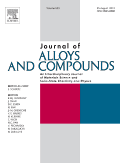
Journal of Alloys and Compounds
Advancing the Frontier of Materials ResearchJournal of Alloys and Compounds, published by Elsevier Science SA, stands at the forefront of materials research, focusing on the properties, applications, and innovations within alloys and compounds. With an impressive impact factor and prestigious rankings placing it in the Q1 quartile across multiple related categories—including Materials Chemistry, Mechanical Engineering, and Mechanics of Materials—this journal is recognized for its significant contributions to the field. Researchers and professionals engaged in metallurgy, materials science, and engineering will find it a critical resource that encompasses groundbreaking studies, insightful reviews, and essential findings. The journal has a strong influence, as evidenced by its Scopus rankings—ranking 14th in Metals and Alloys and 28th in Mechanics of Materials, indicating a robust global impact. As it continues to publish cutting-edge research from 1991 to 2024, the Journal of Alloys and Compounds serves as a vital platform for the exchange of knowledge, thereby advancing our understanding of complex materials and fostering innovation in diverse applications.
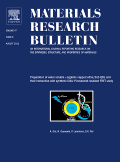
MATERIALS RESEARCH BULLETIN
Connecting researchers to the latest in materials innovation.MATERIALS RESEARCH BULLETIN is a prestigious journal published by Pergamon-Elsevier Science Ltd, dedicated to advancing the field of materials science and engineering. Since its inception in 1966, the journal has served as a platform for high-impact research, particularly in areas such as condensed matter physics, mechanical engineering, and materials mechanics. With an impressive Q1 ranking in multiple categories, including Condensed Matter Physics and Materials Science, MATERIALS RESEARCH BULLETIN stands out as a leading resource in its domain, aiming to disseminate innovative research findings and methodologies that address fundamental and applied aspects of materials. The journal’s rigorous peer-review process ensures the publication of high-quality articles, making it an essential resource for researchers, professionals, and students alike. With its ongoing commitment to fostering scientific discourse and collaboration, MATERIALS RESEARCH BULLETIN remains at the forefront of materials research, contributing significantly to the global scientific community.
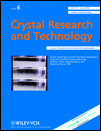
CRYSTAL RESEARCH AND TECHNOLOGY
Exploring Innovations in Crystal ScienceCRYSTAL RESEARCH AND TECHNOLOGY, published by WILEY-V C H VERLAG GMBH, is a distinguished journal in the fields of Chemistry, Condensed Matter Physics, and Materials Science, with over five decades of continuous publication from 1966 to 2024. With its ISSN 0232-1300 and E-ISSN 1521-4079, the journal serves as a crucial platform for disseminating significant research findings, theoretical advances, and technological innovations related to crystal growth, structure, and properties. Holding a Category Quartile ranking of Q3 in the 2023 assessments across its disciplines, CRYSTAL RESEARCH AND TECHNOLOGY is recognized for its contribution to the scientific community, making it an essential resource for researchers, professionals, and students alike. While this journal is not open access, its robust publishing framework ensures that high-quality peer-reviewed articles remain accessible to a global audience. The importance of this journal lies in its commitment to advancing knowledge and fostering collaborations in crystallography and related fields.
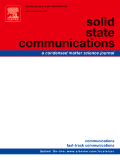
SOLID STATE COMMUNICATIONS
Advancing Knowledge in Chemistry and PhysicsSOLID STATE COMMUNICATIONS is a prestigious journal published by Pergamon-Elsevier Science Ltd, dedicated to disseminating cutting-edge research in the fields of Chemistry, Condensed Matter Physics, and Materials Chemistry. With an ISSN of 0038-1098 and an E-ISSN of 1879-2766, the journal has established itself as a vital resource for researchers and professionals seeking to explore the fundamental properties and innovative applications of solid-state materials. As of 2023, it boasts a commendable standing, ranking in the Q2 quartile across its various categories, reflecting its impactful contributions to the scientific community. The journal is indexed in Scopus, further validating its relevance and quality, with notable ranks close to the median percentile in key areas. While SOLID STATE COMMUNICATIONS does not currently offer Open Access options, it remains a highly regarded source for rigorous scientific inquiry and open discussions, with a publication history dating back to 1963 and continuing to 2024. The journal serves as an essential platform for disseminating groundbreaking findings and fostering collaboration within the vibrant fields of solid state science.
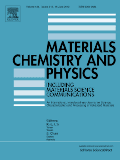
MATERIALS CHEMISTRY AND PHYSICS
Connecting Science and Innovation in Materials ResearchMATERIALS CHEMISTRY AND PHYSICS is a leading peer-reviewed journal published by Elsevier Science SA, focusing on the intersection of materials science and condensed matter physics. With an esteemed impact factor and a distinguished reputation in its field, this journal holds a Q1 ranking in Condensed Matter Physics and a Q2 ranking in miscellaneous Materials Science categories as of 2023. Spanning over three decades since its inception in 1983, it provides a vital platform for researchers, professionals, and students to disseminate cutting-edge findings and innovations in materials characterization, properties, and applications. The journal is indexed in Scopus, boasting impressive rankings that reflect its commitment to publishing high-quality research. Although it does not currently offer an Open Access option, it remains an essential resource for those seeking to stay at the forefront of materials chemistry and physics.
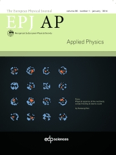
EUROPEAN PHYSICAL JOURNAL-APPLIED PHYSICS
Connecting Researchers to Pioneering DiscoveriesEUROPEAN PHYSICAL JOURNAL-APPLIED PHYSICS, published by EDP SCIENCES S A in France, serves as a vital platform for the dissemination of cutting-edge research in the fields of condensed matter physics, electronic, optical and magnetic materials, and instrumentation. With an ISSN of 1286-0042 and E-ISSN of 1286-0050, this journal has been a valuable resource for researchers since its inception in 1998, aiming to foster innovation and dialogue among professionals and academics alike. Featuring an impact factor that reflects its growing influence, the journal is currently ranked in the Q4 quartile for several related categories in 2023, underscoring its ongoing contributions to the scientific community despite its relatively competitive positioning. Access to the journal is available through various Open Access options, ensuring that pioneering research is readily accessible to all. As it continues to evolve towards its 2024 objectives, EUROPEAN PHYSICAL JOURNAL-APPLIED PHYSICS remains dedicated to advancing knowledge and facilitating collaboration in applied physics, making it an essential resource for students, researchers, and professionals dedicated to exploring the forefront of physical sciences.

JOURNAL OF MATERIALS SCIENCE-MATERIALS IN ELECTRONICS
Pioneering Discoveries at the Intersection of Materials and ElectronicsJOURNAL OF MATERIALS SCIENCE-MATERIALS IN ELECTRONICS, published by Springer, is a distinguished international journal that serves as a vital platform for the dissemination of cutting-edge research in the field of materials science, with a keen focus on electronics. Since its inception in 1990, this journal has consistently contributed to the advancement of knowledge across a range of interdisciplinary categories, including Atomic and Molecular Physics, Optical and Magnetic Materials, and Biomedical Engineering, achieving notable quartile positions in various 2023 Scopus rankings. With an impact factor that signifies its scholarly influence, this journal provides a rigorous peer-reviewed environment for researchers and practitioners to share innovative ideas, experimental findings, and theoretical developments. Although it does not currently offer open access options, the depth and breadth of topics covered—including condensed matter physics and bioengineering—make it an essential resource for those at the forefront of materials research. With a commitment to bridging the gap between theory and practical application, the JOURNAL OF MATERIALS SCIENCE-MATERIALS IN ELECTRONICS continues to pave the way for future explorations in the ever-evolving landscape of materials science.
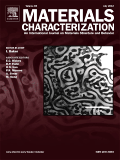
MATERIALS CHARACTERIZATION
Transforming Knowledge into Practical ApplicationsMATERIALS CHARACTERIZATION is a leading international journal dedicated to the advancement of knowledge in the field of materials science and engineering. Published by Elsevier Science Inc, this esteemed journal has been disseminating vital research since 1970 and continues to be essential for scholars and industry professionals alike. With an impressive impact reflected in its Q1 quartile rankings across several categories—including Condensed Matter Physics, Materials Science, Mechanical Engineering, and Mechanics of Materials—MATERIALS CHARACTERIZATION stands out as a premier outlet for innovative studies and technical advancements. Researchers can access a wealth of peer-reviewed articles that explore properties, characterization techniques, and applications of materials, fostering interdisciplinary collaboration. With a commitment to high-quality research and comprehensive review processes, the journal plays a crucial role in shaping the future of materials science, making it an invaluable resource for anyone invested in this dynamic field.